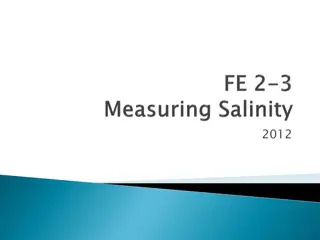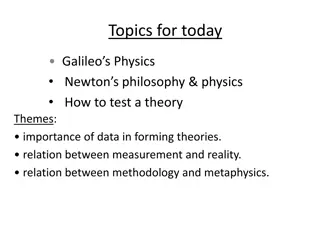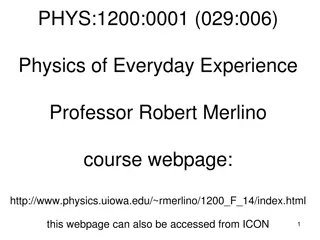Understanding Work in Physics
Exploring the concept of work in physics, this content covers how work is performed, when it is done, and the formula to calculate work based on force and distance. It highlights that the amount of work depends on the force applied and the distance moved, showcasing that different paths may require the same amount of work despite variations in length and steepness.
Download Presentation

Please find below an Image/Link to download the presentation.
The content on the website is provided AS IS for your information and personal use only. It may not be sold, licensed, or shared on other websites without obtaining consent from the author. Download presentation by click this link. If you encounter any issues during the download, it is possible that the publisher has removed the file from their server.
E N D
Presentation Transcript
What do you think of when you think of work? think of You probably
In physics Work is performed when a force that is applied to an object moves that object.
When is work done? The force and motion of the object have to be in the same direction. There must be some movement in the direction of the force. Work is done on the bin because force and motion are in the same direction. No work is done on the bin because force and motion are in different directions.
Formula Work = Force x Distance The unit of force is Newtons (N) The unit of distance is meters (m) The unit of work is Newton-meters (N m) One Newton-meter is equal to one joule So, the unit of work is a joule (J)
Thus, work depends on Work = Force x Distance Force Distance Force The larger the applied force, the more work is being done. The smallerthe applied force, the lesswork is being done. Distance The further an object is moved, the larger the work required. The shorterthe object is moved, the smaller the work required.
Suppose you want to get to the top of a hill. Which path will require the least amount of work to get to the top? Path B Climbing up the steep hill Path A Walking up the long hill
If you chose path A then you are wrong! If you chose path B then you are also wrong! Both paths require the same amount of work to get to the top.
How is this possible? Path A, while longer, requires less force (than B) against gravity to reach the top. Path B, while shorter, requires more force (than A)against the gravity to reach the top. Work Work Force Force Distance Distance Both paths require the same amount of work to get to the top.
Lets look at another example. An inclined ramp at different angles: 30 , 45 , 60 Observe what happens to work (bottom row) as the car reaches the same height with the different sloped ramps. The car must use a greater force to move up against gravity. The greater the incline the less distance the car must travel.
Work Example 1 You are leaning on a box with a force of 20 Newtons (N) but the box doesn t move. How much work is done? W = F x D W= 20 N x 0 m W= 0 Joules No work is done on the box!
Work Example 2 You lift a box with 10 Newtons of force onto a moving truck that is 1.5 meters high. How much work did you do? W = F x D W= 10 N x 1.5 m W= 15 Joules
Work Example 3 o It takes 5 Newtons of force to push the same box onto a moving truck using a ramp that is 3 meters long. How much work did you do? (Assuming no friction on the ramp) W = F x D W= 5 N x 3 m W= 15 Joules The same amount of work is done but the ramp makes the work easier due to distribution of force.
As you saw from the previous examples: If you move the SAME object to the SAME location, it is the SAME WORK!
Summary Work is performed when a force applied to an object moves the object. The force and motion of the object have to be in the same direction for work to be done. There must be some movement in the direction of the force. Work depends on force and distance. No work is done on an object when it is at rest. Displacing the same object to the same location results in performing the same amount of work.
Calculating Work Tips Read the question carefully to identify what you need to solve for and what is given to you. Every answer should have the units included. The shorthand for the unit meters is written as m and Newtons is N. Work in a step by step manner by writing each step out. The Work Equation can be rearranged to solve for different things. Force x Distance Work = Work Force = Distance Work Force x Distance Work = Distance = Force























